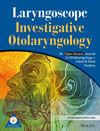Clinical impact of hyperbaric oxygen therapy combined with steroid treatment for sudden sensorineural hearing loss: A case–control study
Abstract
Objectives
The aim of present study was to evaluate the clinical efficacy of hyperbaric oxygen therapy (HBOT) as a primary therapy combined with standard systemic corticosteroid treatment for sudden sensorineural hearing loss (SSNHL) compared to treatment without the use of HBOT (non-HBOT) through clinical data and advanced analytical approaches.
Study Design
Case–control study.
Methods
Conducted across three Japanese medical centers involving 298 SSNHL patients diagnosed between 2020 and 2023. Inclusion criteria encompassed first onset and treatment, WHO grade 3 or 4 initial hearing impairment, receipt of systemic corticosteroid therapy within 14 days of symptom onset, and initiation of HBOT within the same timeframe for the case group. The primary outcome measure was the difference in hearing improvement (mean hearing level in decibels, dB) between the two groups, assessed by pure-tone audiometry at baseline and 3 months post-treatment, using the inverse probability of treatment weighting (IPTW) method adjusted for covariate differences.
Results
The study included 67 patients in the HBOT group and 68 in the non-HBOT group. The HBOT group exhibited significantly greater hearing improvement (IPTW-adjusted difference: 7.6 dB, 95% CI 0.4–14.7; p = 0.038). Patients without vertigo in the HBOT group demonstrated substantial hearing improvement (11.5 dB, 95% CI 2.3–20.6; p = 0.014), whereas those with vertigo showed no significant improvement (−1.8 dB, 95% CI −11.8–8.3; p = 0.729). The HBOT group also had a significantly higher association with complete recovery (IPTW-adjusted odds ratio: 2.57, 95% CI 1.13–5.85; p = 0.025).
Conclusion
In SSHNL, HBOT combination therapy yielded slightly but significantly improved hearing outcomes compared to non-HBOT treatment.
Level of Evidence
4.


 求助内容:
求助内容: 应助结果提醒方式:
应助结果提醒方式:


